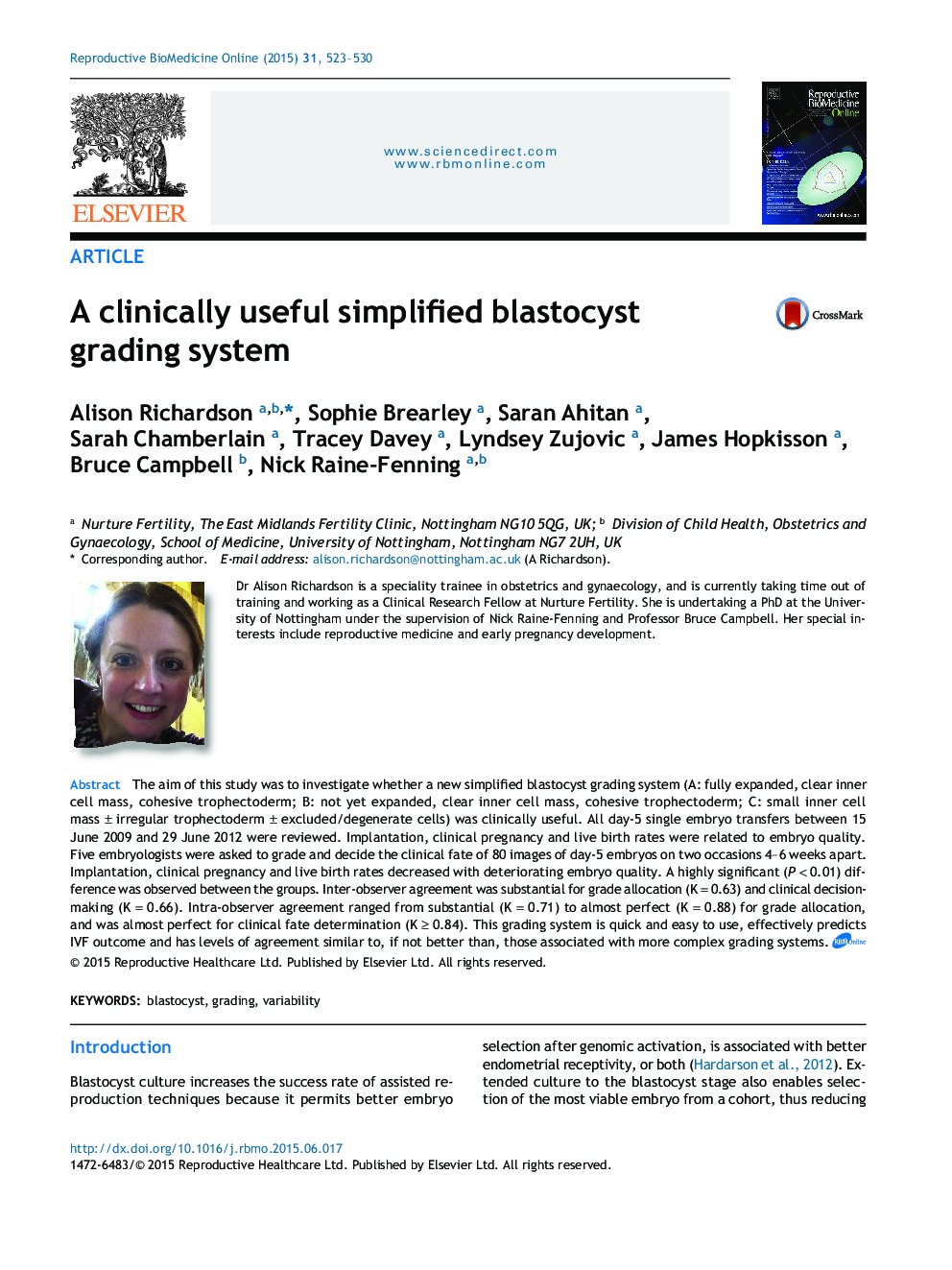| Article ID | Journal | Published Year | Pages | File Type |
|---|---|---|---|---|
| 6188608 | Reproductive BioMedicine Online | 2015 | 8 Pages |
The aim of this study was to investigate whether a new simplified blastocyst grading system (A: fully expanded, clear inner cell mass, cohesive trophectoderm; B: not yet expanded, clear inner cell mass, cohesive trophectoderm; C: small inner cell mass ± irregular trophectoderm ± excluded/degenerate cells) was clinically useful. All day-5 single embryo transfers between 15 June 2009 and 29 June 2012 were reviewed. Implantation, clinical pregnancy and live birth rates were related to embryo quality. Five embryologists were asked to grade and decide the clinical fate of 80 images of day-5 embryos on two occasions 4-6 weeks apart. Implantation, clinical pregnancy and live birth rates decreased with deteriorating embryo quality. A highly significant (P < 0.01) difference was observed between the groups. Inter-observer agreement was substantial for grade allocation (K = 0.63) and clinical decision-making (K = 0.66). Intra-observer agreement ranged from substantial (K = 0.71) to almost perfect (K = 0.88) for grade allocation, and was almost perfect for clinical fate determination (K ⥠0.84). This grading system is quick and easy to use, effectively predicts IVF outcome and has levels of agreement similar to, if not better than, those associated with more complex grading systems.
